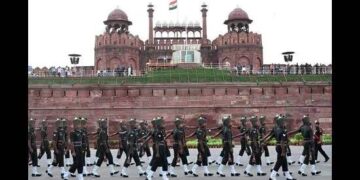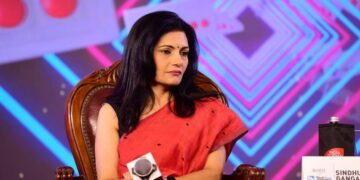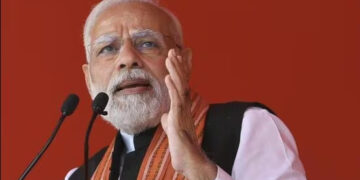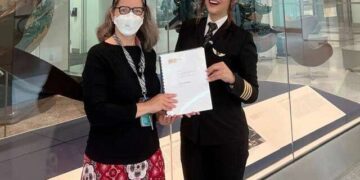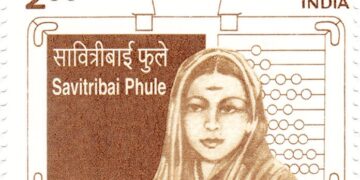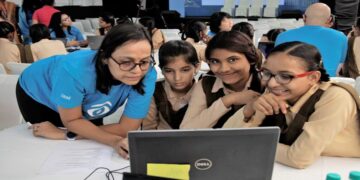Induction of Women in Indian Armed Forces
The gender of an individual is not a hindrance when it comes to applying for a position in the armed forces. In modern warfare, having the necessary skills and knowledge is more advantageous than having brute strength. The Indian Armed Forces are in dire need of a strong mixed gender force as the recruitment and retention rates have reportedly gone down. By allowing women to serve in combat roles, this can be addressed. Due to the lack of women in command posts, the Indian Army decided not to allow women to serve as commanding officers. This issue has to be addressed in order to improve the culture and norms of the Army. The political and military leadership of the country must also play a role in making these changes. Some of the world’s most prominent military organizations, such as the US, France, Germany, and North Korea, have female officers serving in front-line combat roles. Women have the right to pursue their careers and reach the top ranks of the armed forces. Equality is a fundamental constitutional guarantee. The Indian Armed Forces have seen a surge in the participation of women. In a major push to the women intake by the forces, the government has also taken significant steps to increase the percentage ratio of women officers and other ranks (ORs). Whether it’s women in combat roles or the medical services in Defence, it’s a significant push towards their empowerment also.
In contrast to developed countries such as Canada, the UK, and USA, India has taken a long time to allow women to pursue other careers apart from being medical or nursing professionals. The number of women in India’s armed forces has significantly increased over the past couple of years. They are now joining the military as both soldiers and fighter pilots. There has been a lot of talk about the entry of women into the Indian Armed Forces. In spite of the male-dominated nature of the military, young women from India have been able to break the glass ceiling and are currently serving in various positions in the country’s armed forces. The government has also approved the induction of 1,700 women as jawans into the Corps of Military Police. Although women have been accepted into auxiliary services in the Indian Armed Forces, the issue of including or not allowing them in combat roles has been a persistent one.
Glance at the Indian Defence History with regard to Women:
In 1888, the Indian Military Nursing Service was established, which marked a significant step in the development of women’s roles in the Indian Armed Forces. During World War I, nurses from the Indian Army served in various capacities. The Women’s Auxiliary Corps was also established to allow women to take on non-combatant roles such as administrative and communications. One of the members of the corps was Noor Inayat, who served as a spy during the Second World War. She was able to earn a reputation for her service. Women were only allowed to serve in non-combat roles in the British Indian Army until Bose established the Azad Hind Fauj.
In 1950, the Army Act made it illegal for women to receive regular commissions. On November 1, 1958, the Medical Corps of the Indian Army became the first military organization to give female soldiers regular commissions. Women were also allowed to serve on short-service commission throughout the 80s to 90s. By 2020, women are not allowed to serve as combat troops in Special Forces such as the British Parachute Regiment. They can still join other non-combatant wings such as the signal corps and engineers.
Also, opposing arguments were made regarding including women in combat roles or in PC positions within the Indian Armed Force:
Society in India is patriarchal, which makes it hard for women to participate in active combat roles.
It has been believed that men are better at fighting than women due to their physical prowess and aggression.
Although women have been accepted into auxiliary services in the Indian Armed Forces, the issue of including or not allowing them in combat roles has been a persistent one. In February, the Supreme Court ruled that officers from the short-service commission can be granted permanent positions in the Indian Armed Force. Currently, officers in the Indian Armed Forces are only allowed to serve for 14 years. While a PC can serve until they retire, three options will be available for the SSC after 10 years, i.e., Elect for a Permanent Commission, Resign from service and Opt for resignation.
The Supreme Court’s ruling allowed women to serve in the Indian Armed Forces as PC officers. This was regarded as a significant step in the advancement of women’s roles within the military. Women are only allowed to participate in combat roles within the Indian Army and certain specialist brigades. Non-combatant positions are still available for women.
The percentage of women in Armed Forces is as under:
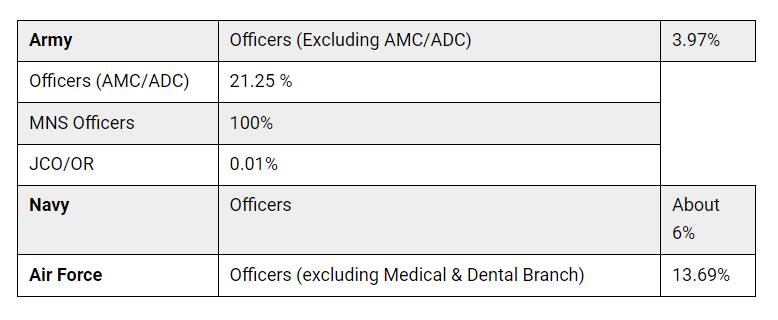
There are no vacancies for women in the Indian Army. The posts in the Indian Air Force and Indian Navy are gender neutral. There have been various steps taken by the government to increase the number of women in the defence sector. According to the above table, women officers of the Army Medical Corps and Army Dental Corps make up about 21.25% of the officers in the Indian Army. Participation of women makes up about 0.01 % of the total Junior Commissioned Officers (JCOs) and ORs. Similarly, women represent 6% of the total officers in the Indian Navy and 13.69% in the Air Force, excluding the officers in the Medical and Dental branch.
Army
The Indian Army’s combat employment philosophy for women is continuously reviewed. Currently, women are being commissioned into various streams in the Indian Army. These include the Corps of Engineers, the Corps of Signals, the Army Air Defence, the Army Service Corps, the Army Ordnance Corps, the Army Aviation Corps, the Intelligence Corps, the Judge Advocate General’s Branch, and the Army Education Corps. As for military nurses and doctors, these are women only positions. Various initiatives are being taken to improve the recruitment and training of women in the Indian Army. These include the establishment of a permanent commission for women officers and the recruitment of women cadets in the NDA.
Navy
In 1991, the Indian Navy started to recruit women as officers. Over the years, various branches of the organization have been opened for women, including through NDA. Women sailors are also being recruited through the Agnipath Scheme for the first time. About 20% of the total vacancies in the Navy are for women.
Air force
The recruitment of women in the Indian Air Force is conducted in a gender-neutral manner. All the branches of the organization are covered by women officers. There are also regular publicity drives and print and electronic media campaigns about opportunities for women in the service. An opening for women has been provided through the National Commission for Women’s Special entry for flying SSC. In 2015, the Indian Air Force started implementing a permanent scheme for inducting women officers into all combat roles. This approach is gender neutral and allows women to join the organization without any restrictions.
#womenindia #womenindiatv #womensupportingwomen #womeninbusiness #femaleentrepreneurs #growthmindset #buildalifeyoulove #girlboss #girlpower #womanownedbusiness #GirlBossesUnite #FemaleFounders #Entrepreneurship #Entrepreneur #BrandYourBusiness


